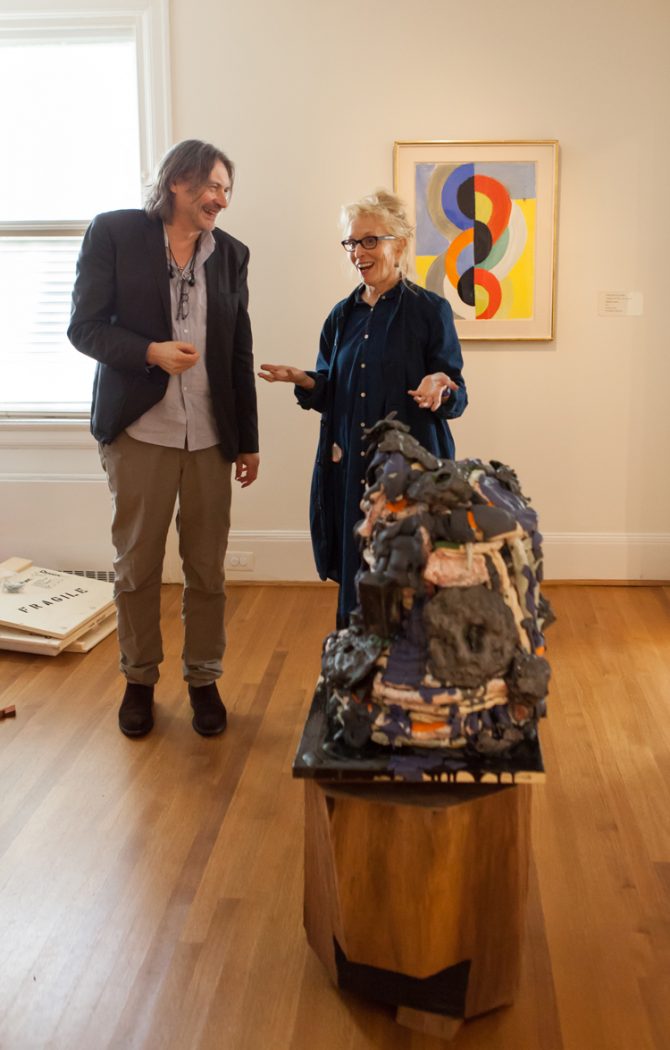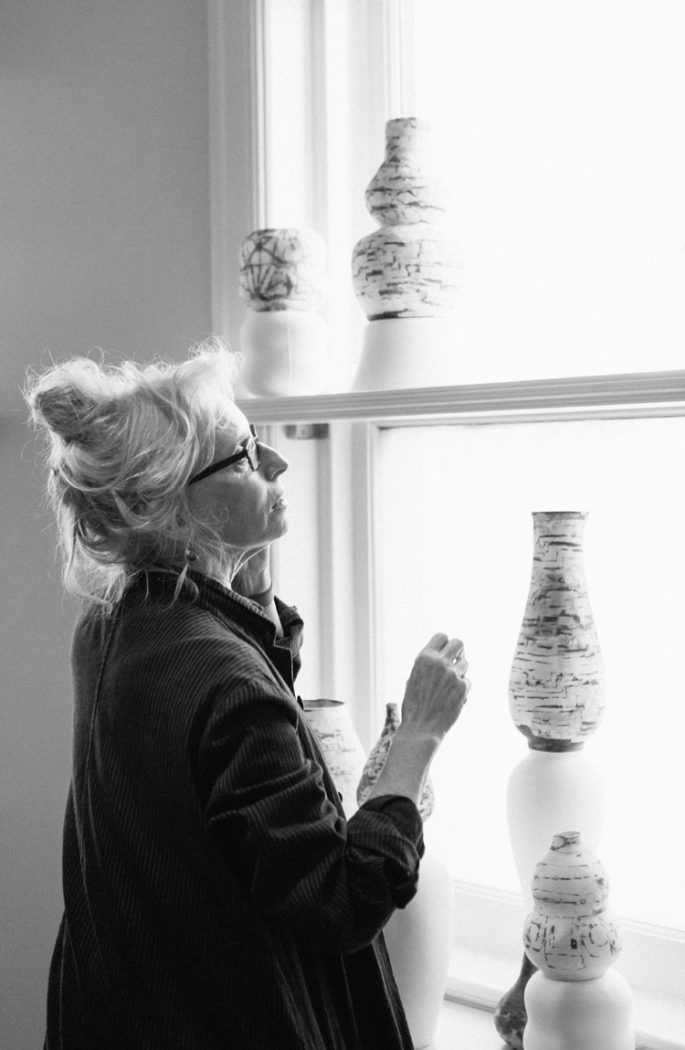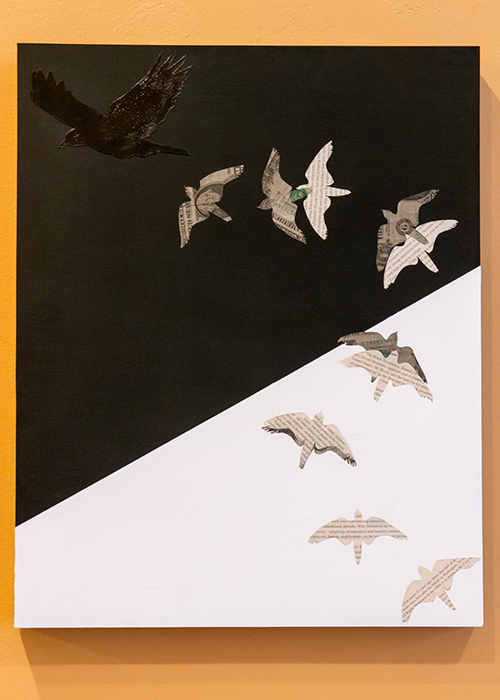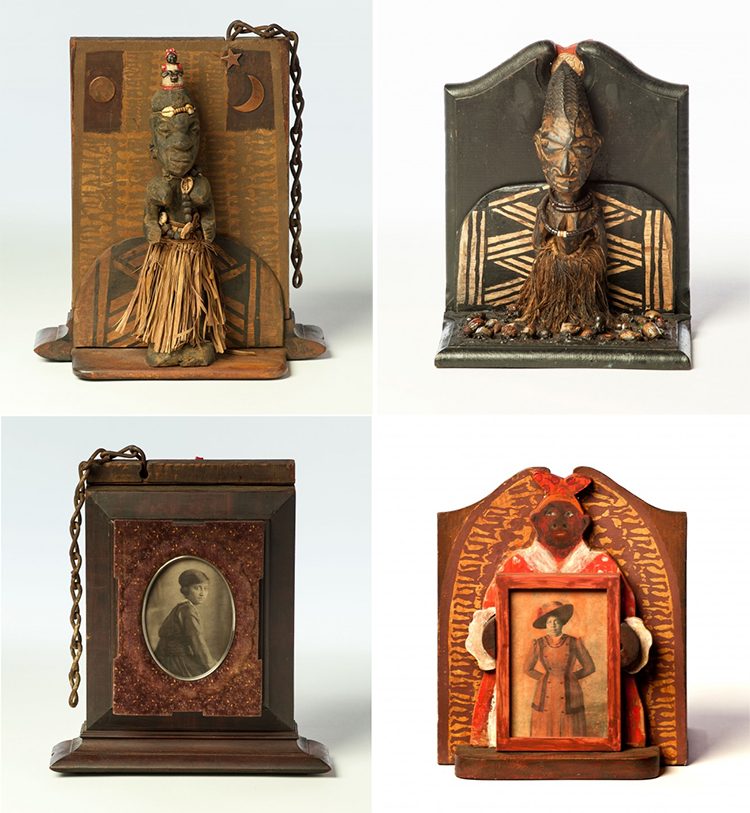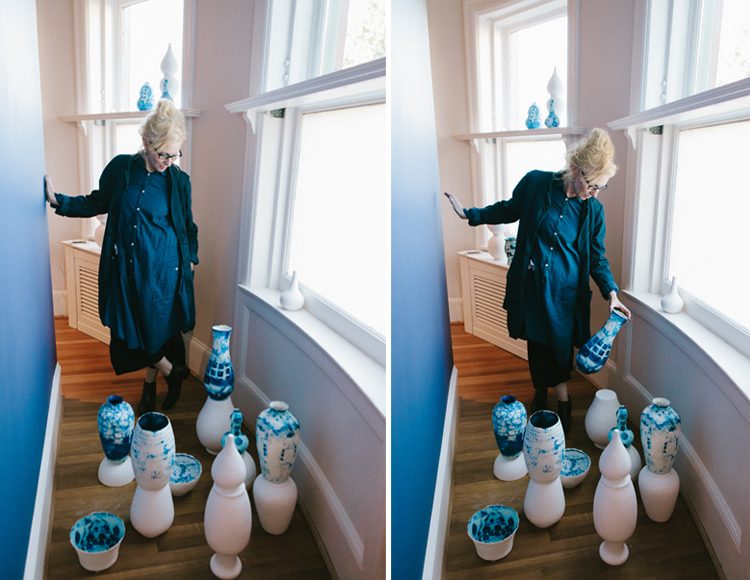
Arlene Shechet with her installation Once Removed (1998). These works are mde from abacá paper and Hydrocal. Photos: Rhiannon Newman
Check out these behind-the-scenes photos of Arlene Shechet installing her Intersections project, From Here On Now. Shechet is a New York-based sculptor known for glazed ceramic sculptures that are off-kilter yet hang in a balance between stable and unstable, teetering between the restraint of intellect and the insistence of instinct.
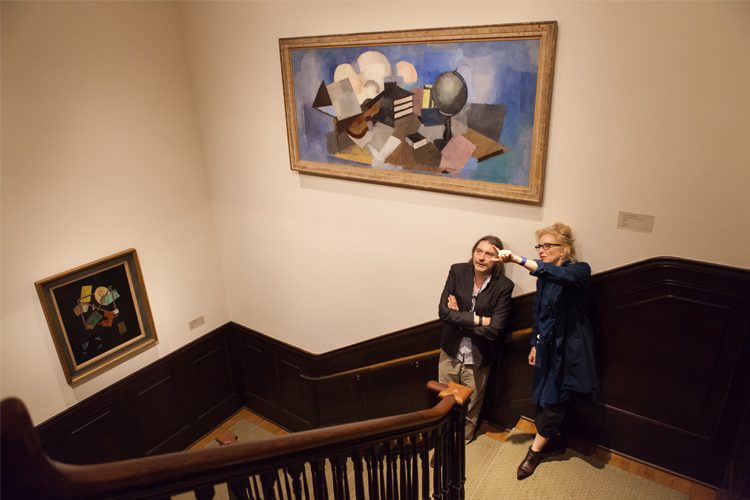
Shechet in the staircaise of the original Phillips house with Deputy Director for Curatorial and Academic Affairs Klaus Ottmann. Photo: Rhiannon Newman
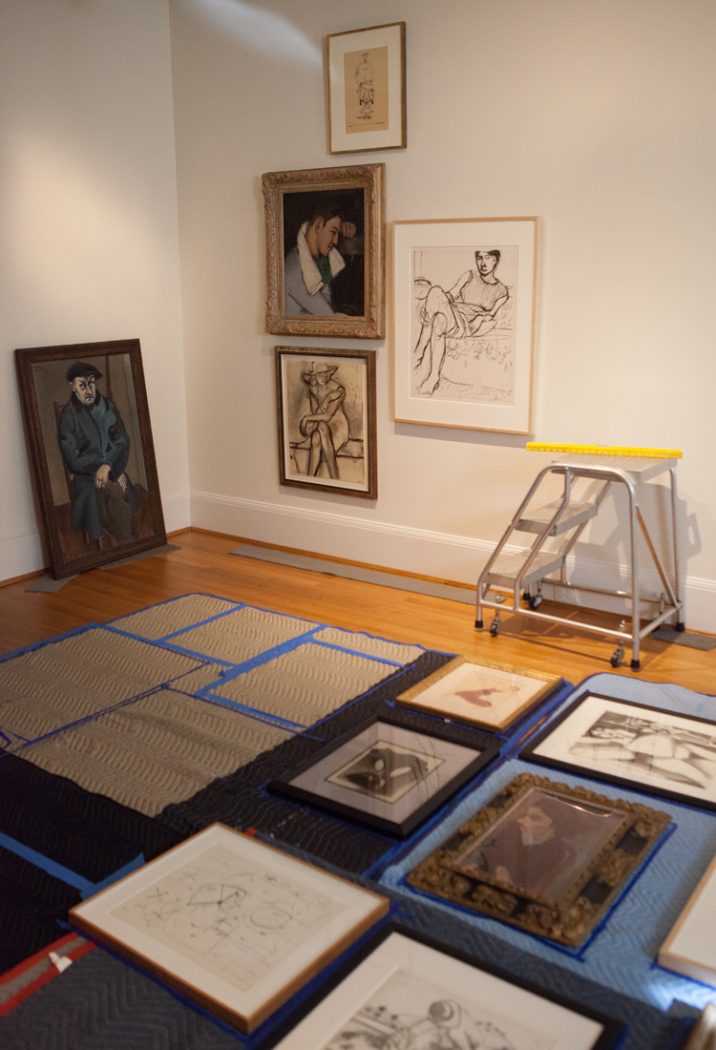
In an adjacent gallery to the one pictured above, portraits from the museum’s permanent collection are hung salon style. Photo: Rhiannon Newman
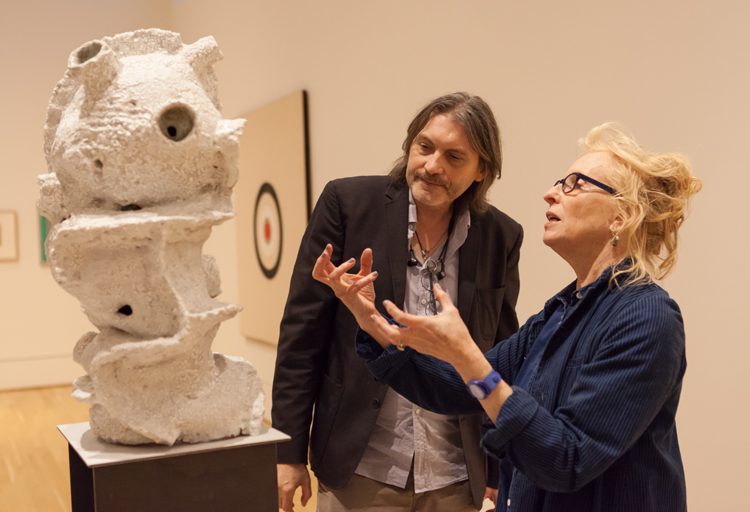
In addition to her works on view in the second floor of the original Phillips house, Shechet’s ceramics are on view in a first floor gallery of the more recent addition. Shechet and Ottmann are pictured here with For the Forest (2016). Photo: Rhiannon Newman


